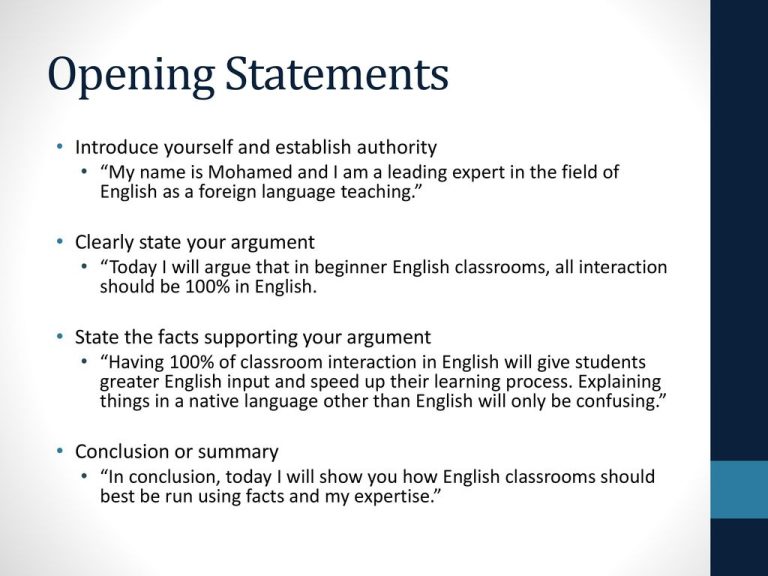How Do You Make a Debate Interesting? Tips and Tricks
A debate can be dull if not handled well. But making it interesting is possible.
Debates are a great way to exchange ideas and learn new perspectives. Engaging debates not only capture the audience’s attention but also make the discussion more productive. To make a debate interesting, you need to focus on several key elements.
These include choosing a compelling topic, understanding your audience, and presenting your arguments clearly and passionately. By doing so, you can turn a potentially boring debate into an engaging and informative event. Ready to dive into the details? Let’s explore how you can make your debates more exciting and impactful.

Credit: whyy.org
Engage Your Audience
Engaging your audience is key to making a debate interesting. Without it, even the best arguments can fall flat. Captivate your listeners. Keep them invested in the topic. Here’s how you can do it effectively.
Know Your Audience
Understanding your audience is crucial. Tailor your arguments to their interests. If they are students, use educational examples. For professionals, use work-related scenarios. Knowing their background helps you connect better.
Use Relatable Examples
Examples make your points clearer. Use examples that your audience can relate to. Everyday situations work best. They make complex ideas simple. People understand better and stay engaged.

Credit: x.com
Structure Your Arguments
Structuring your arguments effectively can make any debate more engaging and understandable. A clear structure helps your audience follow along with ease. It also ensures that your points are delivered in a logical manner.
Clear Introduction
Begin your argument with a clear introduction. State your main point in simple terms. This helps your audience know what to expect. Use a brief statement to set the stage. For example:
- “Today, I will argue that renewable energy is our best option.”
Next, provide some context. Explain why this topic matters. This gives your audience a reason to care. For instance:
- “With climate change becoming a pressing issue, finding sustainable energy sources is crucial.”
Logical Sequence
After your introduction, present your arguments in a logical sequence. This makes your points easier to follow. Start with your strongest point. This grabs attention right away.
For example, if debating renewable energy, you might start with its environmental benefits:
- Reduces greenhouse gas emissions.
- Lessens dependency on fossil fuels.
- Promotes cleaner air and water.
Next, move on to secondary points. These might include economic benefits or technological advancements:
- Creates jobs in new industries.
- Innovations in energy storage and distribution.
Each point should build on the previous one. This creates a cohesive argument. Use transitions to link your points. Phrases like “furthermore” or “additionally” help maintain flow.
Finally, wrap up your argument with a summary. Restate your main points briefly. This reinforces your message:
- “In summary, renewable energy offers environmental and economic benefits.”
A well-structured argument keeps your audience engaged. It makes your points clear and compelling. By following a logical sequence, you ensure your message is heard.
Use Persuasive Techniques
Debates can be engaging if you use persuasive techniques effectively. Persuasive techniques help you connect with your audience. They also help you present your arguments convincingly.
Appeal To Emotions
People respond strongly to emotions. Use stories or anecdotes to evoke feelings. This can make your argument more relatable. Use words that create a vivid picture in their minds. For example, talk about real-life scenarios that impact them directly. This makes your argument more compelling.
Use Strong Evidence
Facts and data are powerful. Use statistics to back up your claims. This shows that your argument is based on solid information. Quote experts to add credibility. This can make your points more convincing. Ensure your evidence is recent and relevant. Outdated information can weaken your argument.

Credit: www.youtube.com
Maintain A Dynamic Delivery
To make a debate interesting, you must keep your delivery dynamic. A static delivery can bore the audience and lose their attention. A dynamic delivery keeps the audience engaged and makes your arguments more persuasive.
Vary Your Tone
Changing your tone helps to highlight key points. Use a calm tone for facts. Use a stronger tone for important arguments. This keeps the audience alert and interested. Avoid speaking in a monotone voice. It can make even the best points sound dull.
Use Body Language
Your body language speaks volumes. Use hand gestures to emphasize points. Make eye contact to connect with your audience. Move around the stage to keep the energy up. Avoid crossing your arms, which can seem defensive. Your posture should be open and inviting. This shows confidence and helps to engage your audience.
Frequently Asked Questions
How Can You Keep A Debate Engaging?
Use interesting topics, ask questions, and involve the audience. Keep arguments clear and concise. Encourage respectful dialogue.
What Are Some Tips For Debating Effectively?
Stay calm, listen actively, and prepare your points. Use facts to support your arguments. Respect your opponent’s views.
How Important Is Body Language In A Debate?
Very important. Good body language shows confidence and keeps the audience engaged. Maintain eye contact and use gestures.
Conclusion
Making a debate interesting involves more than just presenting facts. Engage your audience with strong arguments. Ask thought-provoking questions. Use relatable examples. Keep the tone lively and respectful. Encourage participation from all sides. Listen actively and respond thoughtfully. This approach makes the debate enjoyable and informative.
Keep practicing these tips to refine your debating skills. An interesting debate not only informs but also inspires. So, go ahead and make your next debate engaging and memorable. Happy debating!





